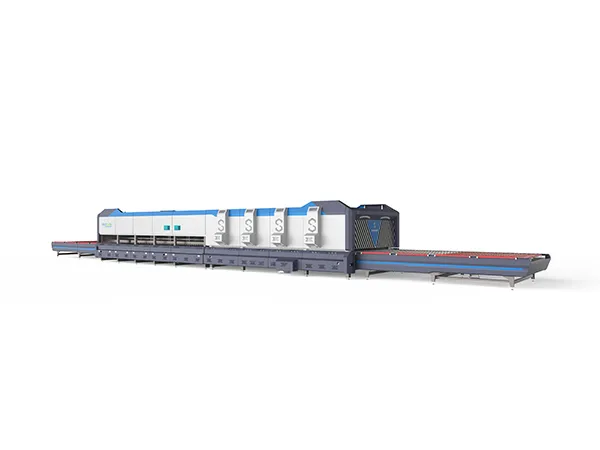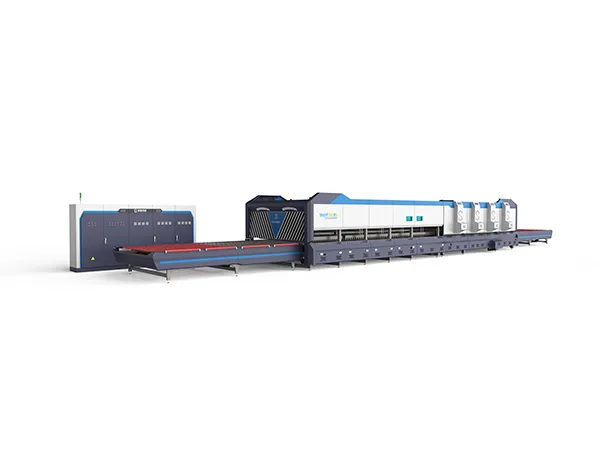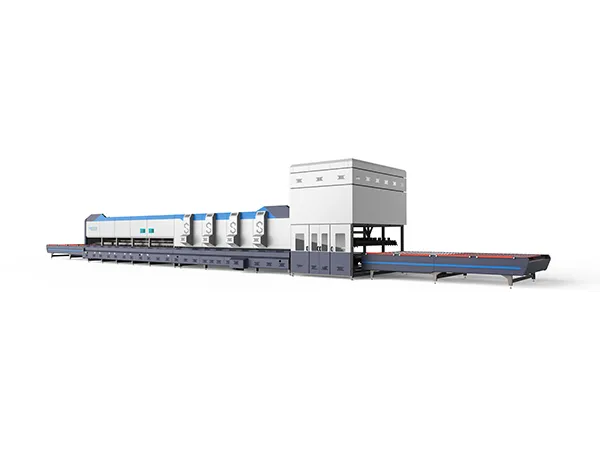A glass tempering furnace is a complex system designed to heat-treat glass to improve its strength and safety characteristics. The tempering process involves heating the glass to a high temperature and then rapidly cooling it. This process requires several integrated systems to ensure precise control and consistent quality. Here are the main systems that a glass tempering furnace typically consists of:
Glass tempering furnace system composition
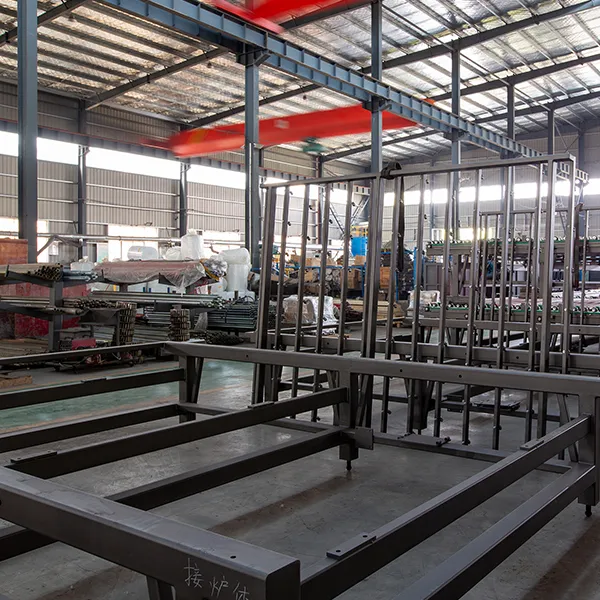
1. Heating System
Furnace Chamber: The main body where the glass is heated. It is insulated to retain heat and ensure uniform temperature distribution.
Heating Elements: These can be electric (resistance heating elements) or gas-fired burners, providing the necessary heat to bring the glass to the tempering temperature, typically around 620-700°C (1148-1292°F).
Temperature Control: Thermocouples and sensors monitor the temperature inside the furnace. A control system adjusts the power to the heating elements to maintain the desired temperature profile.
2. Quenching System
Air Blowers: High-power fans that force air onto the heated glass to cool it rapidly. This rapid cooling is critical to developing the tempered glass's strength properties.
Air Distribution System: Includes nozzles and ducts that direct the air flow uniformly over the surface of the glass. The design ensures even cooling to prevent stress imbalances and potential breakage.
Cooling Control: Adjusts the air pressure and flow rates to achieve the desired cooling rate and ensures uniform tempering across the glass surface.
3. Conveying System
Roller Conveyor: A system of heat-resistant rollers that transport the glass through the furnace. These rollers are designed to handle high temperatures without deforming.
Drive Mechanism: Motors and control systems that precisely regulate the speed of the rollers, ensuring consistent travel speed and timing for each glass piece.
4. Control System
Programmable Logic Controller (PLC): Manages the operation of the entire furnace, including heating, quenching, and conveying systems. The PLC ensures precise timing and coordination of each step in the tempering process.
Human-Machine Interface (HMI): Provides operators with a user-friendly interface to monitor and control the furnace parameters, such as temperature, conveyor speed, and air flow rates.
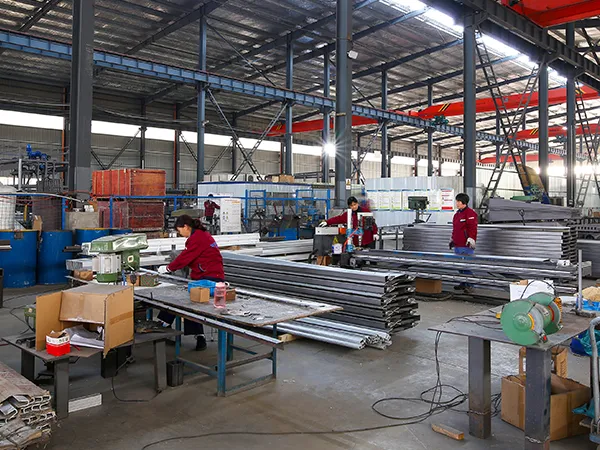
5. Cooling System
Heat Exchangers: Used to cool down the air used in the quenching process to ensure it is at the optimal temperature for rapid cooling of the glass.
Water Circulation System: Often used to cool the air in the heat exchangers. It includes pumps, pipes, and cooling towers or chillers.
6. Exhaust System
Ventilation: Removes hot air and fumes from the furnace chamber to maintain safe operating conditions and improve energy efficiency.
Filters and Scrubbers: Clean the exhaust air to remove particulates and pollutants before releasing it into the atmosphere.
7. Safety Systems
Emergency Shutoff: Allows operators to quickly shut down the furnace in case of an emergency.
Temperature Alarms: Alert operators if temperatures exceed safe limits.
Pressure Relief: Protects the furnace from overpressure situations in the quenching system.
8. Maintenance and Diagnostic System
Diagnostic Tools: Sensors and software that monitor the condition of the furnace components, predicting failures and scheduling maintenance.
Remote Monitoring: Allows for off-site monitoring and troubleshooting, enhancing operational efficiency and minimizing downtime.
Additional Features
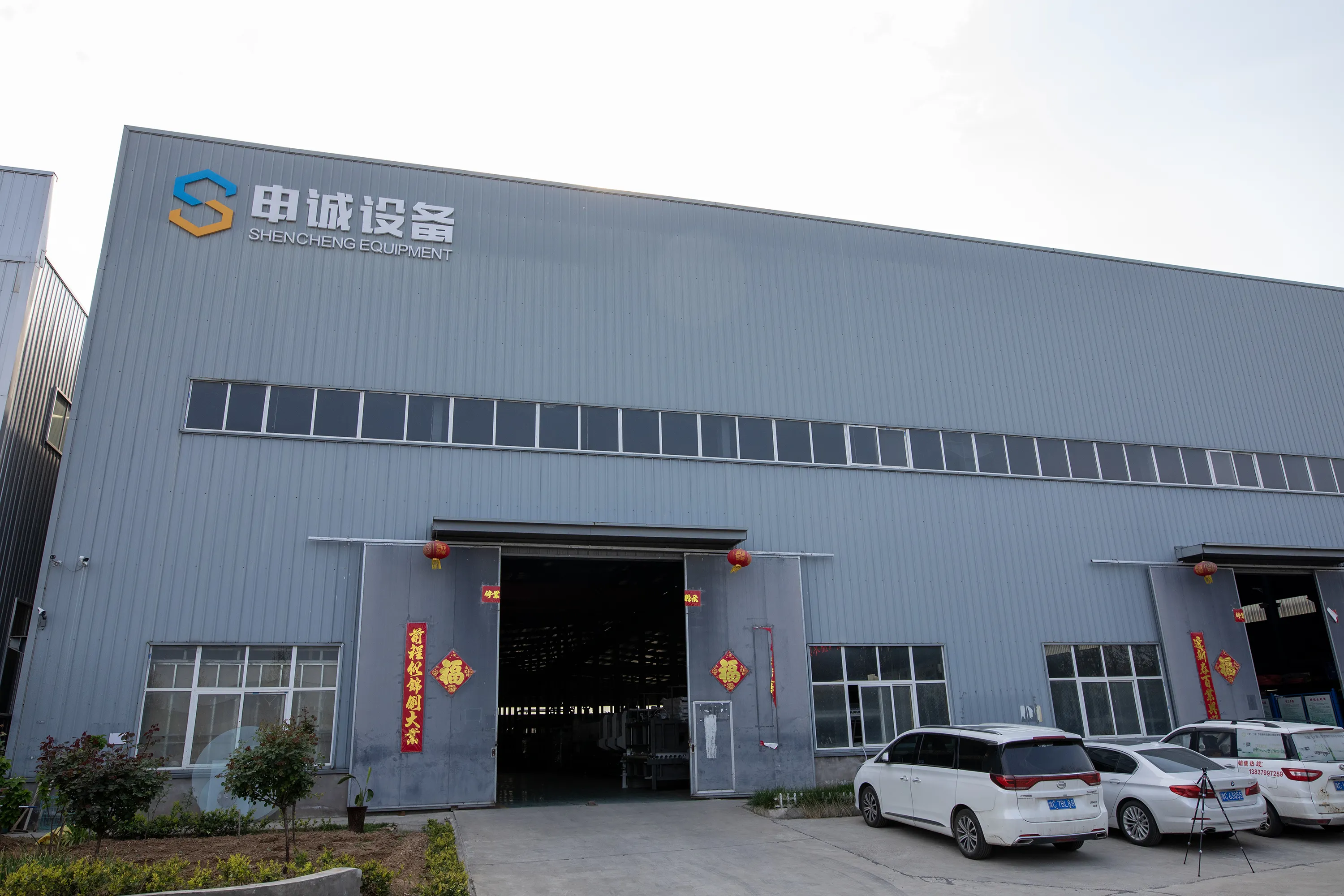
Energy Recovery Systems: Capture and reuse heat from the furnace to improve energy efficiency.
Automation Integration: Interfaces with other manufacturing systems for seamless operation within a production line.
These systems work together to ensure the glass is uniformly heated and cooled, resulting in high-quality tempered glass with the desired mechanical properties. Proper integration and precise control of these systems are crucial for the efficient and safe operation of a glass tempering furnace.








